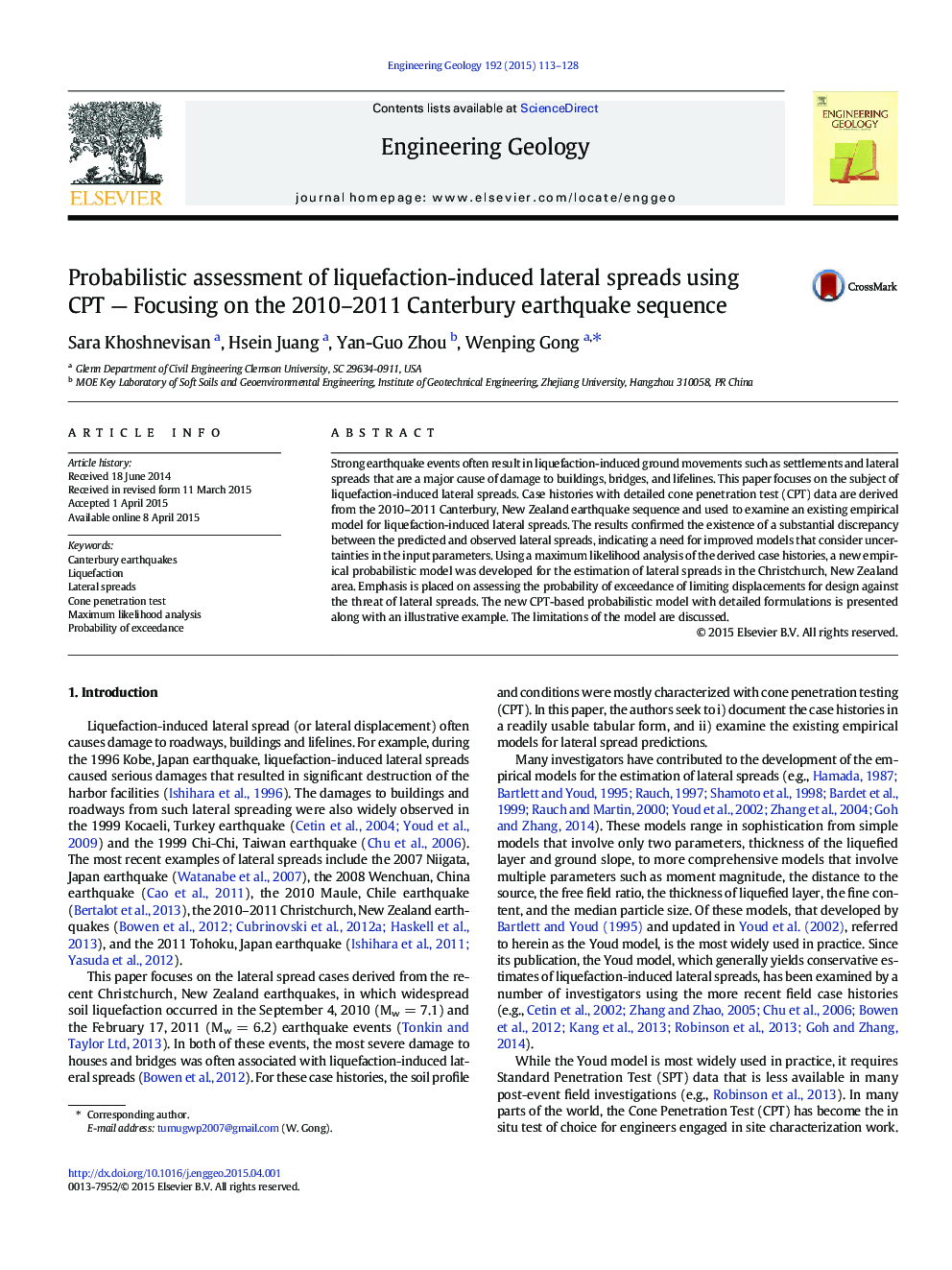| Article ID | Journal | Published Year | Pages | File Type |
|---|---|---|---|---|
| 4743269 | Engineering Geology | 2015 | 16 Pages |
•Creating a database of case histories of lateral spreads with CPT data from the Canterbury earthquakes•Assessing existing CPT-based deterministic models for lateral spreads•Developing a new CPT-based probabilistic model for lateral spreads•Discussing the effectiveness of pre-event and post-event field tests for evaluating lateral spreads•Introducing the concept of probability of exceedance for design against the threat of lateral spreads
Strong earthquake events often result in liquefaction-induced ground movements such as settlements and lateral spreads that are a major cause of damage to buildings, bridges, and lifelines. This paper focuses on the subject of liquefaction-induced lateral spreads. Case histories with detailed cone penetration test (CPT) data are derived from the 2010–2011 Canterbury, New Zealand earthquake sequence and used to examine an existing empirical model for liquefaction-induced lateral spreads. The results confirmed the existence of a substantial discrepancy between the predicted and observed lateral spreads, indicating a need for improved models that consider uncertainties in the input parameters. Using a maximum likelihood analysis of the derived case histories, a new empirical probabilistic model was developed for the estimation of lateral spreads in the Christchurch, New Zealand area. Emphasis is placed on assessing the probability of exceedance of limiting displacements for design against the threat of lateral spreads. The new CPT-based probabilistic model with detailed formulations is presented along with an illustrative example. The limitations of the model are discussed.
